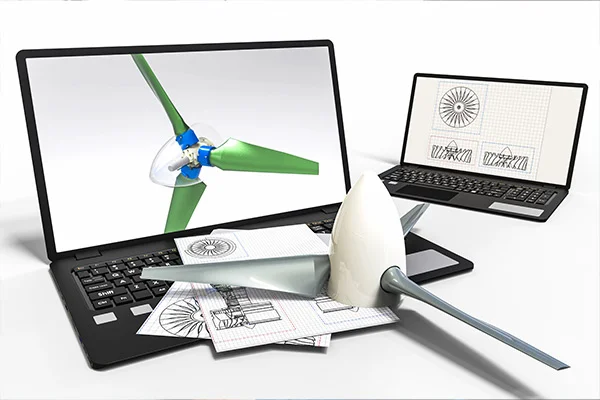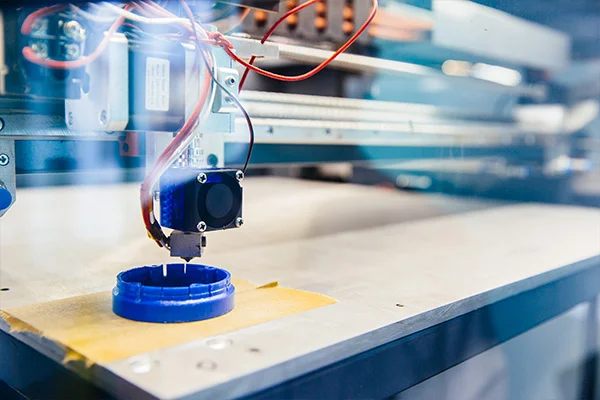Professionalism and work ethics… "The level of professionalism and work ethic you bring to the table is simply great. The fact that clicked the most is when you took complete responsibility for our product development and the outcome is exactly what we desired. Thank you Prescient."
Knowledge-Based Engineering (KBE)
Transform your US manufacturing and design workflows today
What Is Knowledge-Based Engineering (KBE)?
Embracing Knowledge-Based Engineering will allow you to drive faster, smarter product development and safeguard critical know-how for future growth.
Knowledge-Based Engineering (KBE) is a cutting-edge engineering methodology, using computer systems to capture, manage, and apply engineering expertise for the design and development of new products. With artificial intelligence (AI), machine learning (ML), and CAD automation, KBE can automate and customize the product development process, delivering consistent accuracy and efficiency.
A typical KBE system is a combination of robust knowledge base, intelligent inference rules, and a user-friendly interface. It enables engineers to leverage best practices, US technical standards, and manufacturing processes across the design phase, while the AI-powered inference engine analyzes data to recommend optimal solutions.
For US manufacturers and engineering enterprises, KBE streamlines complex product design and development cycles, improves product quality, and preserves valuable engineering knowledge. Industries such as aerospace, automotive, electronics, and advanced manufacturing use KBE to stay competitive and accelerate innovation.
Embracing Knowledge-Based Engineering will allow you to drive faster, smarter product development and safeguard critical know-how for future growth.
Prescient KBE Services
Our KBE solution offers a range of tools and technologies to help businesses automate their design and development processes, improve product quality, and reduce design cycle times.
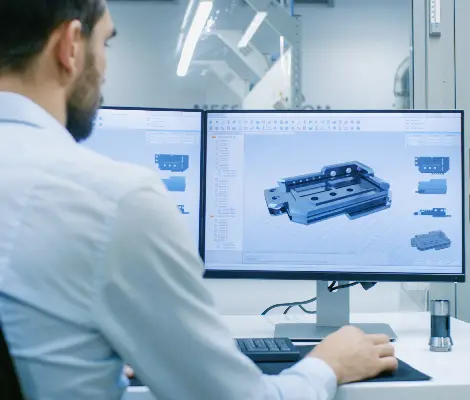
Product Configurator
Empower Your Designs with US-Focused Product Configurators
Product configurators are essential for US businesses that offer customizable products to customers. Leveraging advanced Knowledge-Based Engineering (KBE) and CAD tools, our configurators allow users to easily select product options, personalize features, and create unique configurations for manufacturing, industrial, or engineering applications.
- Cad Product Configurators
- Engineering Product Configurators
Design Automation
Maximize Efficiency with Design Automation Tools
Prescient design automation tools help US manufacturers and engineering firms automate complex design processes, to reduce product development time and resource requirements. These tools include validators, automated checkers, engineering calculators, and specialized features to ensure design accuracy, compliance with US industry standards, and improved productivity.
By integrating design automation solutions, US engineering teams can minimize manual errors, accelerate design iterations, and maintain consistent quality throughout the product lifecycle.
- Specialized Features
- Validators/Checkers
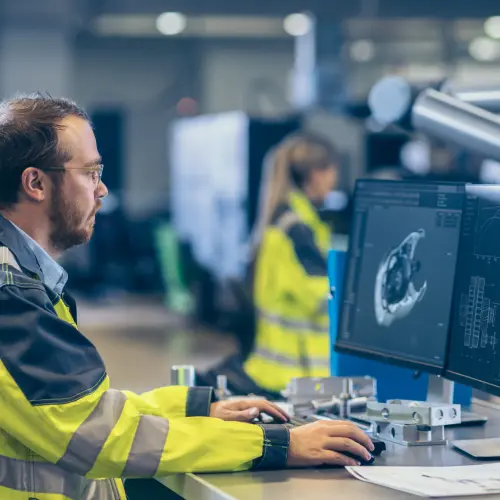
Industries That Benefit from KBE in the USA
Aerospace & Defense
The aerospace and defense industry requires highly complex product designs that must meet strict US regulatory requirements. KBE can help automate design processes and ensure compliance with regulations, which can lead to cost savings and improved product quality.
Automotive
The automotive industry requires product designs that meet stringent safety and performance requirements. KBE can help automate design processes, improve product quality, and reduce design cycle times, which can lead to cost savings and improved customer satisfaction.
Electronics
The electronics industry requires precision and performance in product designs. KBE can help US companies automate design processes, improve product quality, and minimize design cycle times, which can lead to cost savings and improved customer satisfaction.
Manufacturing
KBE enhances manufacturing by automating repetitive design tasks and optimizing product workflows. This drives higher production efficiency, consistent quality, and faster product launches suitable for large-scale US manufacturing operations.

Improved Design Efficiency
KBE can automate routine design tasks, reduce design cycle times, and improve design efficiency. By automating design processes, engineers can focus on more complex design tasks, which can lead to better design outcomes.

Reduced Design Cycle Times
KBE can help reduce design cycle times by automating design processes and enabling engineers to make informed decisions quickly. This can help businesses bring products to market faster, which can be a significant competitive advantage.

Increased Product Quality
KBE can help improve product quality by enabling engineers to make informed decisions based on their knowledge and experience. By leveraging engineering knowledge in the design process, KBE can help reduce errors and improve product performance.

Enhanced Engineering Knowledge Management
KBE can help businesses manage their engineering knowledge more effectively. By capturing and storing engineering knowledge in a knowledge base, businesses can reuse engineering knowledge in future design projects and avoid reinventing the wheel.
How KBE Can Benefit Your Business?

Improved Design Efficiency
KBE automates routine and repetitive design tasks, to cut down design cycle times and enable engineers to focus on more complex, creative challenges. This streamlining leads to enhanced overall design efficiency for US manufacturers and engineering firms.

Increased Product Quality
By embedding engineering knowledge directly into the design process, KBE facilitates more informed decision-making, reducing errors and improving product performance and reliability key factors in meeting stringent US industry standards.

Reduced Design Cycle Times
Automated workflows and rapid access to engineering expertise allow businesses to accelerate product development, helping US companies bring innovative products to market faster, gaining a strong competitive edge.

Enhanced Engineering Knowledge Management
KBE systems capture and organize critical engineering knowledge into reusable knowledge bases. US enterprises can retain valuable intellectual capital, avoid redundant work, and ensure consistent quality across product lines.
KBE Implementation Process

Why choose Prescient’s KBE solutions
Prescient offers unmatched efficiency, innovation, and precision in Knowledge Based Engineering (KBE) to our US clients. Our tailored solutions automate complex tasks, reduce errors, and accelerate production times, significantly benefiting American industries like aerospace, automotive, and electronics.
With Prescient, embrace the future of engineering.
a) 25+ years of engineering expertise
b) End-to-end consulting and implementation
c) Developers with deep industry knowledge
d) Flexible engagement models for U.S. companies
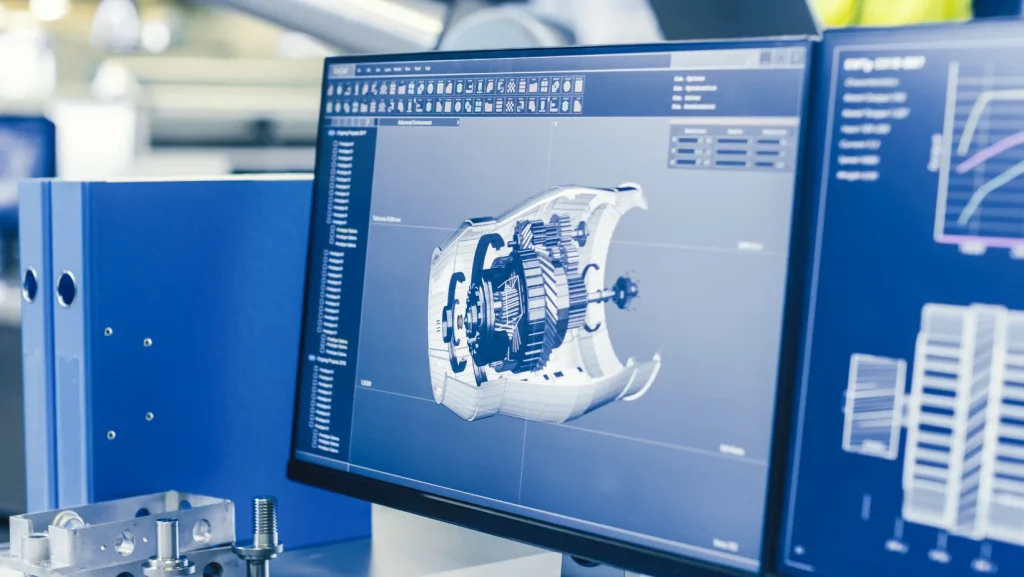

Contact Expert
Book a demo online and an expert will connect with you!
What is Knowledge-based Engineering (KBE)?
Knowledge-based Engineering (KBE) is an engineering methodology that uses computer- based tools and technologies to automate the design and development processes. It involves creating a knowledge base that contains the rules, algorithms, and engineering knowledge needed to automate design processes.
What are the benefits of KBE?
KBE can help businesses automate design processes, improve product quality, and reduce design cycle times. By automating design processes, KBE can help businesses stay competitive and meet customer demands.
What industries can benefit from KBE?
KBE can benefit a wide range of industries that require complex product design and development. These industries include aerospace and defense, automotive, electronics, and manufacturing.
What KBE services do you offer?
We offer CAD automation, CAD customization, and product configurator development services. Our expert team can help you identify the right KBE tools and technologies for your business and develop a customized KBE strategy to meet your specific needs.
How does the KBE implementation process work?
The KBE implementation process involves identifying business requirements, developing a KBE strategy, developing a knowledge base, developing and testing KBE applications, and deploying and maintaining the KBE applications.
How long does it take to implement KBE in a business?
The time it takes to implement KBE in a business depends on the complexity of the business's product design and development processes, the scope of the KBE implementation, and the availability of resources. A typical KBE implementation can take anywhere from a few months to a year or more.
How do I get started with KBE?
To get started with KBE, contact us at Prescient Technologies Pvt Ltd. Our expert team can help you identify the right KBE tools and technologies for your business and develop a customized KBE strategy to meet your specific needs.
Testimonials


First on our list, without doubt … “I greatly appreciate the software development work you have been doing for Level 3 Inspection for all these years. Your team’s skills and your methodical approach to perfection, coupled with your high level of professionalism, have made the road pretty smooth for us to achieve our organizational and operational integration goals. If we have to recommend a competent partner we can totally depend on, your name would be the first on our list, without a doubt. Thank you Prescient!”
Bill Greene
CEO, Level 3 Inspection, USA
They are the exception... "We've been working with Prescient Technologies for quite a few years now, and they continue to provide quality work in a timely manner for a reasonable cost. They are the exception to the two out of three rule! (Fast, High Quality or Good Price, pick two)"
Bob Squier
President, 3D Scan IT, Inc., USA
There could not have been a better alternative… "It was a chance meeting with the Prescient team that set the ball rolling. Initially I was skeptical but their attitude “Together we can” inspired confidence. ”Hand-holding” by Prescient was exemplary and that was crucial for a start-up like ours. Our project in Orthopaedic navigation involved totally new objectives in as yet unexplored areas to be achieved with innovative steps in CAD domain. Few years down the line together we have added a chapter at the very edge of scientific knowledge. Thanks to Prescient our software idea has now evolved into a full-fledged market-ready product. Today I am convinced that there could not have been a better alternative."
Dr Vijay Panchanadikar
President, VMP Orthopedic, Inc. USA
Professionalism and work ethics… "The level of professionalism and work ethic you bring to the table is simply great. The fact that clicked the most is when you took complete responsibility for our product development and the outcome is exactly what we desired. Thank you Prescient."
Stanley Sunny
Director, CADMATE SoftwareFrequently Asked Questions (FAQs)
What is Knowledge-based Engineering (KBE)?
Knowledge-based Engineering (KBE) is an engineering methodology that uses computer- based tools and technologies to automate the design and development processes. It involves creating a knowledge base that contains the rules, algorithms, and engineering knowledge needed to automate design processes.
What are the benefits of KBE?
KBE can help businesses automate design processes, improve product quality, and reduce design cycle times. By automating design processes, KBE can help businesses stay competitive and meet customer demands.
What industries can benefit from KBE?
KBE can benefit a wide range of industries that require complex product design and development. These industries include aerospace and defense, automotive, electronics, and manufacturing.
What KBE services do you offer?
We offer CAD automation, CAD customization, and product configurator development services. Our expert team can help you identify the right KBE tools and technologies for your business and develop a customized KBE strategy to meet your specific needs.
How does the KBE implementation process work?
The KBE implementation process involves identifying business requirements, developing a KBE strategy, developing a knowledge base, developing and testing KBE applications, and deploying and maintaining the KBE applications.
How long does it take to implement KBE in a business?
The time it takes to implement KBE in a business depends on the complexity of the business's product design and development processes, the scope of the KBE implementation, and the availability of resources. A typical KBE implementation can take anywhere from a few months to a year or more.
How do I get started with KBE?
To get started with KBE, contact us at Prescient Technologies Pvt Ltd. Our expert team can help you identify the right KBE tools and technologies for your business and develop a customized KBE strategy to meet your specific needs.
Featured Posts
Table of content The Evolution of Knowledge-Based Engineering The Importance of Optimization in Manufacturing Optimization Strategies in Knowledge-Based Engineering 1. Design Exploration and...
Table of content Introduction 5 Effective Strategies to Streamline Product Development Through KBE Conclusion Introduction Companies always look for ways to enhance efficiency and optimize product...
Table of content Introduction The KBE Methodology: An Overview The Benefits of KBE in Product Design and Development Application of KBE in Product Design and Development Challenges and Considerations...

